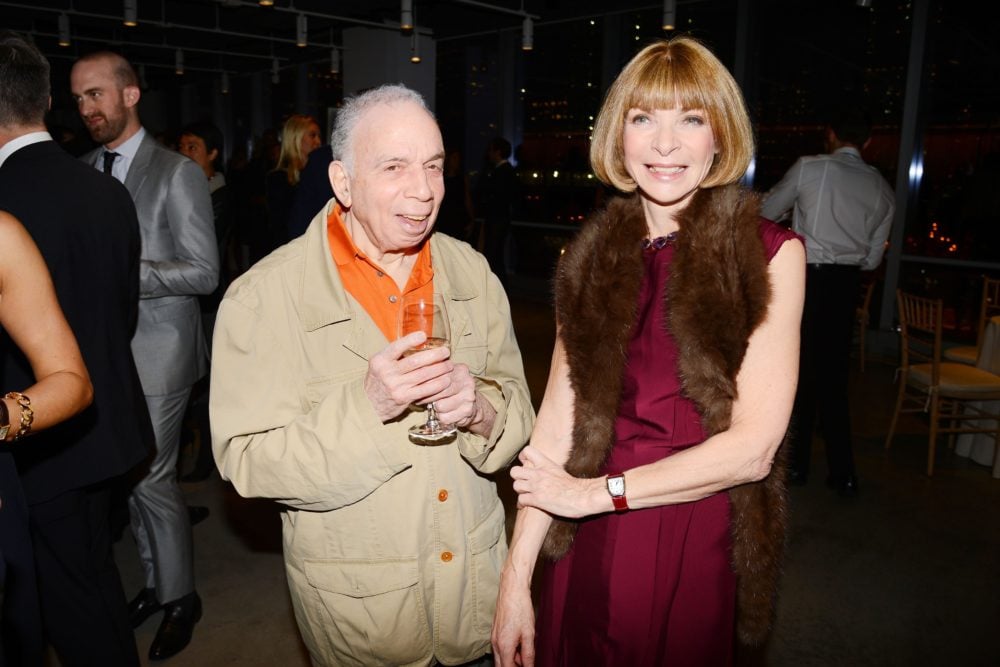
Art collector and publishing giant Samuel Irving Newhouse Jr., known familiarly as SI, died Sunday aged 89.
One of the most influential publishers of the 20th century, Newhouse ran the Condé Nast (CN) media empire for 40 years before retiring quietly in 2015. During that time the billionaire became one of the most important influencers in New York society, with The New Yorker and Vanity Fair among the 128 publications under the CN belt. He was responsible for the hiring of Diana Vreeland and Anna Wintour at Vogue, and it was also Newhouse who commissioned Donald Trump’s infamously ghost-written The Art of the Deal, seeing back then the real-estate mogul’s potential for captivating public attention.
A shrewd businessman for whom quality was more important than keeping publications out of the red—the NYT reports that CN lost up to $20 million in 1994 as nine of its then 14 publications ran deficits—Newman was also known for the extraordinary private art collection he owned with his wife Victoria.
Piet Mondrian, Victory Boogie Woogie (1944). [Public domain], via Wikimedia Commons.
Jasper John’s False Start (1962). Courtesy of the Museum of Modern Art.
Over the years, Newhouse, an unassuming figure in person, became as known for his legendary dealings in art as for his glossy print empire. In 1998, he purchased Jasper Johns’s False Start (1959) for $17 million at Sotheby’s, making a new record for a living artist. The painting was later sold to Newman’s friend and business mogul David Geffen, who resold it in 2006 for $80 million. He also engaged in numerous high-profile deals with casino magnate Steven Wynn, whom he notoriously outbid for Andy Warhol’s 1964 Orange Marylin at the height of Warholmania. For his part, Wynn has poached several paintings from Newhouse’s collection in return.
Two sculptures displayed in Newhouse’s townhouse designed by Alexander Gorlin Architects. (L) Jeff Koons’s Rabbit (1986). Image courtesy of The Broad. © Jeff Koons. (R) Alberto Giacommetti’s Monumental Head (1960).
The size of Newhouse’s collection grew and shrunk with his businesses, and those paintings he didn’t sell off during CN’s periods of retrenchment are now housed in the Newhouse Apartment, completed by Alexander Gorlin Architects in 2016.
Larry Gagosian, Newhouse’s go-to dealer, spoke to Forbes earlier this month about the media mogul’s unfailing business acumen, illustrated by a telling anecdote:
“There was a painting that Si Newhouse wanted to buy in the early 1980s—’Aloha’ by Roy Lichtenstein. I had sold several paintings from that collection to him, and this Lichtenstein was $1 million. Only a handful of paintings had sold for $1 million at that time. So I said, ‘Let’s write them a check.’ And Si, who is a billionaire, said, ‘No, I’m not going to write a check for $1 million. Let’s pay them $100,000 a month.’ And when I asked him why, he said, ‘I don’t want them to think that money comes that easily.’ If he were willing to write a check right away, he explained, it would influence the negotiation. It was a shrewd lesson, especially since ‘Aloha’ would later become worth well over $100 million.”
Jackson Pollock’s No. 5 (1948). Image courtesy of Wikimedia commons.
As the news of his passing circulated, Newhouse’s contemporaries and friends also shared stories that celebrate his life and influence on art and culture.
Vanity Fair editor-in-chief Graydon Carter writes that David Geffen, himself the steward of one of the biggest private art collections in the world, was once showing Newhouse around one of his properties. “They paused in front of a rectangular Jackson Pollock that hung vertically in the breakfast nook off the kitchen,” Carter describes. “Si looked at it for a good while and asked where he had gotten it. Geffen turned to him and said, ‘I bought it from you, Si!’ Si looked at it again and then realized that, when he owned it, he had hung the painting horizontally.”
British art dealer Brett Gorvy paid tribute to Newhouse on Instagram, dubbing him “one of the greatest contemporary collectors ever,” and writing, “I remember bringing Francis Bacon’s self-portrait to the offices of Condé Naste for a viewing prior to its auction at Christie’s in 2006. Despite the Devil Wears Prada surroundings, S.I. greeted me in an old baggy sweat suit, and I still recall the unbridled excitement of his face and his toothy smile, like a schoolboy, as I unpacked the small painting and he examined it closely in his hands.”
Si Newhouse is survived by wife Victoria, children Samuel and Pamela, and his brother, Donald E. Newhouse, as well as five grandchildren, and three great-grandchildren.